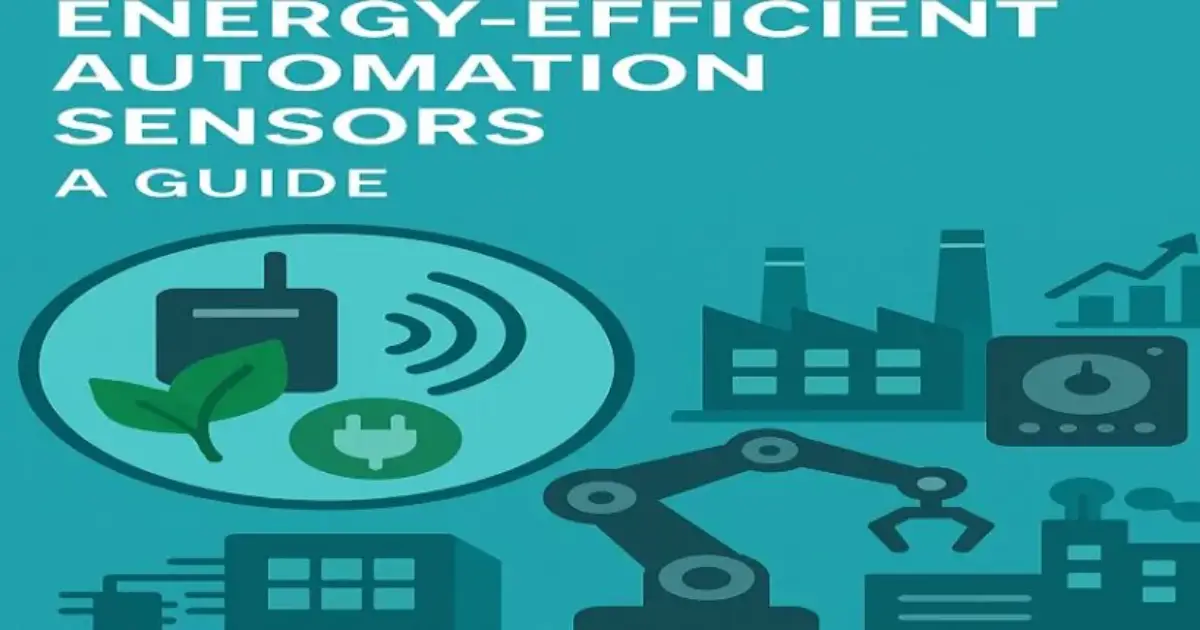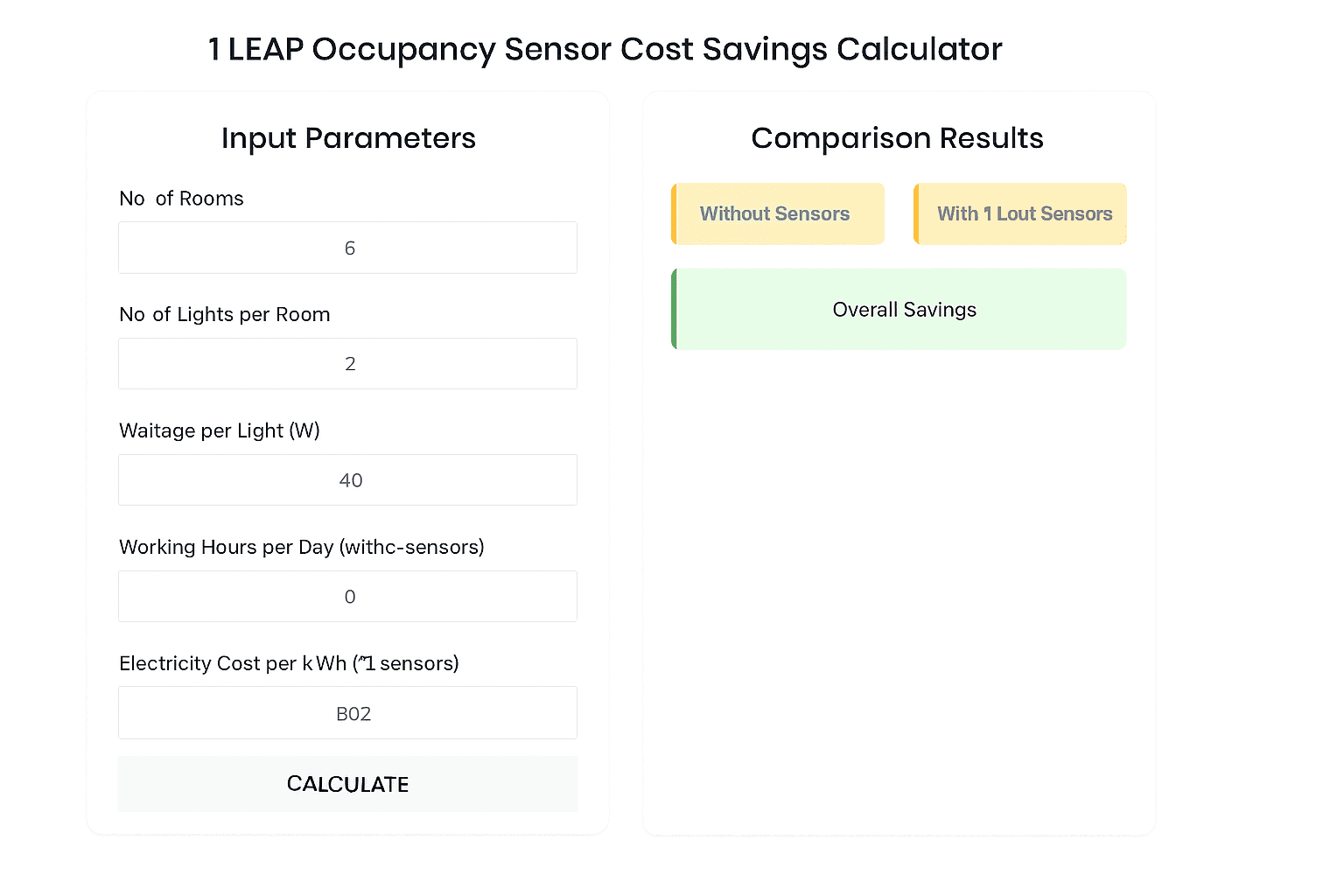The Future of Automation: Energy-Saving Sensor Solutions for Industry and Buildings
In today’s rapidly evolving technological landscape, energy-saving sensor solutions are becoming increasingly crucial for both industrial automation and building automation. These sensors not only enhance operational efficiency but also contribute significantly to sustainability efforts, making them indispensable in modern infrastructure. From factories to smart buildings, the integration of advanced sensor technologies is transforming how we manage energy, reduce costs, and optimize processes.
This article explores the various types of sensors used in automation, their applications in industrial and building settings, and their role in driving energy efficiency. We will also focus on the growing demand for these technologies in India, where rapid development and a focus on sustainability are creating new opportunities for innovation.
1. Introduction to Energy-Saving Sensor Solutions
As global energy demands rise and environmental concerns intensify, businesses and governments are turning to energy efficiency solutions to reduce consumption and minimize their carbon footprint. At the heart of these efforts are energy-saving sensor solutions, which enable precise control over energy usage in both industrial and commercial settings.
Sensors are devices that detect changes in their environment and trigger responses accordingly. In the context of automation, they are used to monitor and control systems such as lighting, heating, ventilation, air conditioning (HVAC), and industrial machinery. By automating these processes, sensors help reduce energy waste, improve operational efficiency, and lower costs.
Some of the most common sensors used in automation include:
- PIR motion sensors for energy saving
- Occupancy sensors for lighting control
- Microwave sensors for automation
- Magnetic reed switches for industrial applications
- Proximity sensors
- Infrared motion sensors
- Day-night sensors for building automation
These technologies are not only essential for cost reduction through automation sensors but also for achieving long-term sustainability goals.
2. Industrial Automation Sensors: Enhancing Efficiency and Productivity
Industrial automation sensors are revolutionizing the way industries operate by providing real-time data that can be used to optimize processes, reduce downtime, and improve overall productivity. These sensors are integral to modern manufacturing, where precision and efficiency are paramount.
Key Sensor Technologies in Industry
- IoT sensors for industry: These sensors collect and transmit data over the internet, enabling remote monitoring and control of industrial processes. They are a cornerstone of Industry 4.0, allowing for predictive maintenance, real-time analytics, and automated decision-making.
- Magnetic reed switches for industrial applications: These switches are used to detect the position of moving parts, such as doors, valves, or conveyor belts. They are highly reliable and durable, making them ideal for harsh industrial environments.
- Proximity sensors: These sensors detect the presence of nearby objects without physical contact, which is crucial for automation in assembly lines, robotics, and safety systems.
Applications and Benefits
In industrial settings, automation sensors are used for:
- Monitoring equipment health to prevent breakdowns.
- Optimizing energy use by adjusting machinery operation based on real-time demand.
- Enhancing safety by detecting hazardous conditions or unauthorized access.
For example, a manufacturing plant that implements IoT sensors can reduce energy consumption by 20% through optimized machine usage and predictive maintenance. This not only lowers operational costs but also extends the lifespan of equipment, contributing to sustainable energy solutions for industrial sectors.
3. Building Automation Sensors: Creating Smart, Energy-Efficient Spaces
In the realm of building automation, sensors are essential for creating smart environments that are both energy-efficient and comfortable for occupants. These sensors automate lighting, HVAC systems, and other building functions, reducing energy waste and improving overall building performance.
Key Sensor Technologies in Buildings
- PIR motion sensors for energy saving: Passive Infrared (PIR) sensors detect motion by measuring changes in infrared radiation. They are commonly used to control lighting in areas that are not constantly occupied, such as conference rooms or restrooms.
- Occupancy sensors for lighting control: These sensors detect whether a space is occupied and adjust lighting accordingly. They are more advanced than PIR sensors, often combining multiple technologies to improve accuracy.
- HVAC sensors: These sensors monitor temperature, humidity, and air quality, allowing HVAC systems to adjust automatically for optimal comfort and energy efficiency.
- Day-night sensors for building automation: Also known as photocells, these sensors detect natural light levels and adjust artificial lighting to maintain consistent illumination while minimizing energy use.
Applications and Benefits
In commercial and residential buildings, automation sensors are used for:
- Automatically turning off lights and HVAC systems in unoccupied rooms.
- Adjusting heating and cooling based on real-time occupancy and weather conditions.
- Integrating with energy management systems to track and optimize energy usage.
For instance, a smart office building equipped with occupancy sensors and HVAC sensors can reduce energy consumption by up to 30%, leading to significant cost savings and a smaller environmental footprint. This makes them a key component of commercial energy-saving devices and automated lighting solutions.
4. Other Sensor Technologies: Expanding the Scope of Automation
Beyond PIR and occupancy sensors, several other sensor technologies are driving innovation in automation:
- Microwave sensors for automation: These sensors use microwave pulses to detect motion and are ideal for larger spaces or outdoor applications, as they can penetrate walls and other obstacles.
- Infrared motion sensors: Similar to PIR sensors, these detect heat emitted by moving objects and are widely used in security systems and automated doors.
- Air curtain sensors: These sensors trigger air curtains in doorways to maintain temperature control while allowing easy access, commonly used in retail and industrial settings.
- Security sirens: While not sensors themselves, these are often integrated with sensor systems to provide alerts in case of unauthorized access or emergencies.
These technologies expand the capabilities of automation systems, making them more versatile and adaptable to different environments.
5. The Role of Sensors in Energy Efficiency and Cost Reduction
One of the most compelling reasons to invest in sensor technology is the potential for energy efficiency and cost reduction. By automating processes that would otherwise require manual intervention or operate inefficiently, sensors help businesses achieve significant savings.
Key Benefits
- Energy savings: Sensors ensure that energy is used only when and where it is needed. For example, PIR motion sensors can reduce lighting energy use by up to 60% in low-traffic areas.
- Operational efficiency: In industrial settings, sensors optimize machinery usage, reducing wear and tear and preventing costly downtime.
- Sustainability: By lowering energy consumption, sensors contribute to sustainable energy solutions and help businesses meet environmental regulations and corporate social responsibility goals.
A case study from a large manufacturing plant in India showed that implementing IoT sensors and energy management systems led to a 25% reduction in energy costs within the first year. Such results highlight the value of energy efficiency solutions for businesses and the potential for cost reduction through automation sensors.
6. Sensor Technology in India: Trends, Suppliers, and Opportunities
India is emerging as a significant player in the global sensor technology market, driven by rapid industrialization, urbanization, and a growing emphasis on smart cities and sustainable development. The demand for sensor technology in India is on the rise, particularly in sectors such as manufacturing, construction, and infrastructure.
Market Trends
- Smart building sensors: With the Indian government’s Smart Cities Mission, there is a growing need for building automation sensors to create energy-efficient urban environments.
- Industrial automation: India’s manufacturing sector is increasingly adopting industrial sensor solutions to improve productivity and compete globally.
- Energy management: As energy costs rise, businesses are turning to energy-saving sensor solutions to optimize consumption and reduce expenses.
Key Suppliers and Manufacturers
India is home to a growing number of automation sensors suppliers and automation product suppliers, offering innovative solutions tailored to local needs. These suppliers provide a range of products, from PIR motion sensors to IoT sensors for industry, catering to both domestic and international markets.
For businesses looking to implement sensor technology, partnering with local suppliers can offer several advantages, including cost-effectiveness, faster delivery times, and better after-sales support.
7. Conclusion: The Future of Sensor Technology in Automation and Energy Savings
As technology advances, sensors will play a bigger role in automation and energy management. They are key to creating efficient, sustainable solutions in industrial IoT and smart buildings. Moreover, integrating sensors with AI and machine learning will enhance automation further.
In markets like India, where development and sustainability are priorities, the future looks promising. Companies like 1 LEAP Technologies lead this revolution. They develop innovative sensor solutions that help businesses achieve energy-saving and automation goals. Therefore, investing in these technologies today offers immediate benefits. It includes energy savings and cost reduction. Additionally, it positions businesses as leaders in a smarter, greener future.


